Trees are beneficial in every landscape. They freshen the air. They provide shade and protect the soil. They do double duty as a home for wildlife, and they can provide a palette of colors that bring the rest of your backyard oasis together, especially if they bloom in purple, violet, lilac, or lavender colors.
In this article, we will give you the basics of caring for 11 trees that bloom in shades of purple. We will tell you where they grow, how they grow, and how you can get them started. But first, let’s consider how purple flowering trees can turn your landscape into a haven for birds.
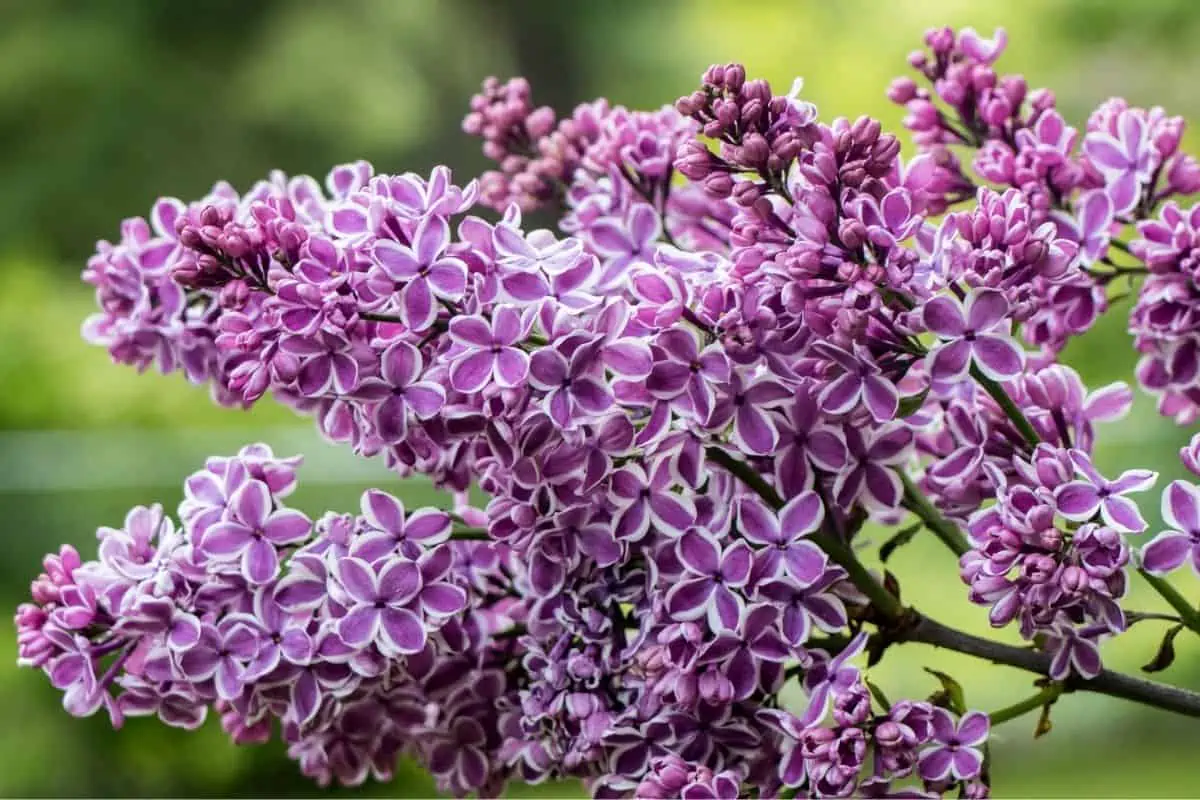
Purple Flowers Attract Hummingbirds
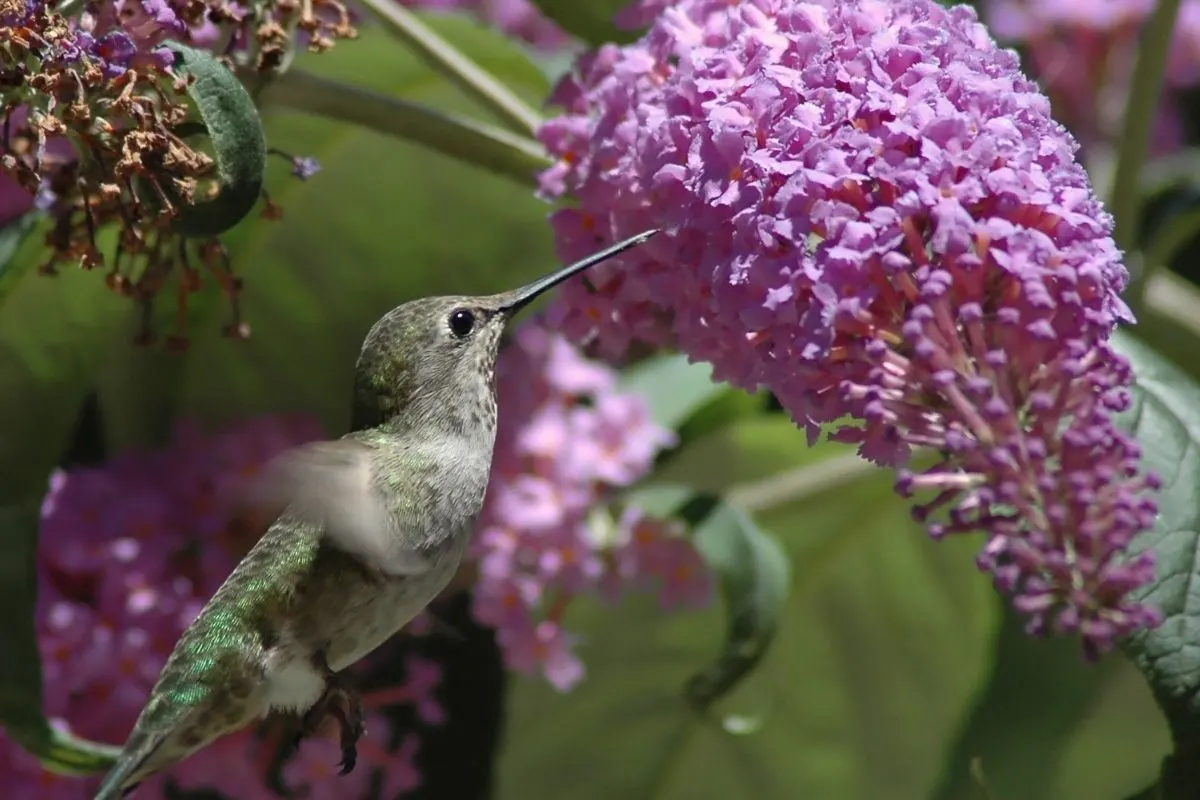
Do you love hummingbirds? How about helping bees and butterflies find a home around your backyard landscape?
If the answers to these questions are “yes,” then your garden design should feature purple flowering trees with a blooming season that matches the migration of hummingbirds in your area.
It isn’t just hummingbirds that are attracted to purple flowers. Purple is also a magnet for robins, wrens, mockingbirds, cardinals, and chickadees. If you love birds, you will be glad you planted purple flowering trees.
More flowering trees you’ll love!
10 Gorgeous Purple Flowering Trees you Need In Your Garden
1. Chaste tree (Vitex agnus-castus)
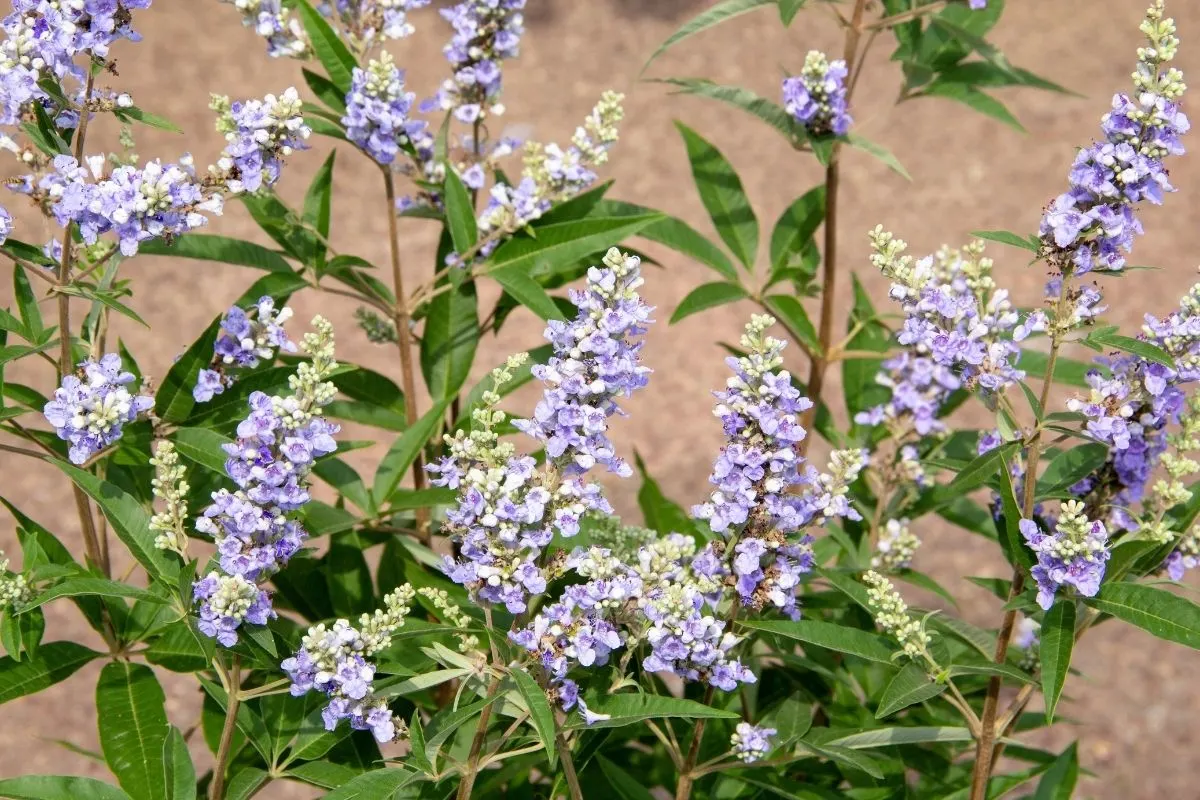
The chaste tree is a low-maintenance, low-growing ornamental tree that originated around the Mediterranean. It may grow just four feet tall in cold-winter climates, but growers in USDA Hardiness Zone 9 may see their chaste trees growing higher than their houses. It can tolerate temperatures from about -10° Fahrenheit to 115° Fahrenheit and can survive long droughts.
The chaste tree starts blooming in late summer when other purple flowering trees are finished for the season. It is usually placed on the borders of a landscape to attract butterflies and hummingbirds.
2. Crape myrtle (Lagerstroemia hybrid)
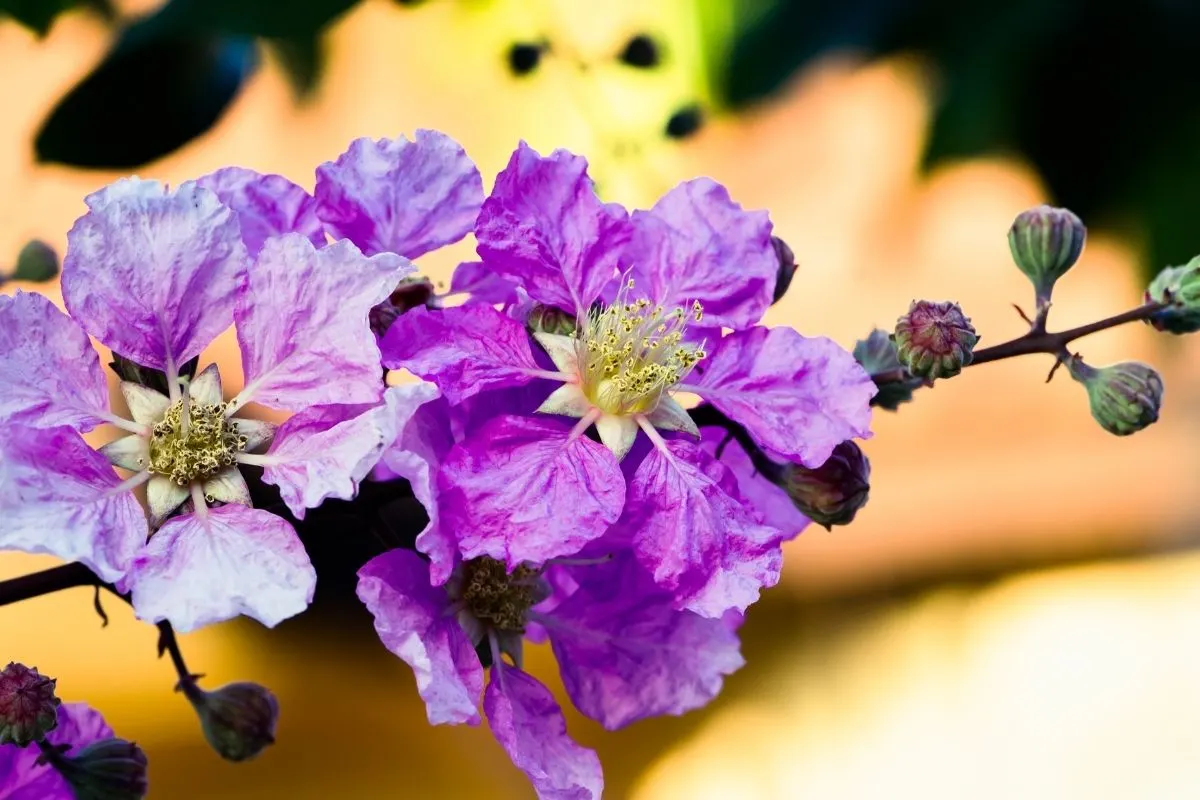
The crape myrtle (also known as Lagerstroemia, but not as crepe myrtle) is an import from India that thrives in hot, dry summer climates. This tough disease-resistant heat-loving woody plant may be a small tree, just a foot tall, perfect for a small garden maintained in desert conditions, or grow as much as 100 feet tall in rich soils with abundant moisture.
Crape myrtles don’t start blooming until late spring or early summer, but once they begin their floral display, they keep on blooming until the first frost. Depending on the weather, their leaves may turn yellow, then red, and then orange in the fall. The bare branches of this beautiful tree take on the appearance of cinnamon sticks on mature trees.
Most crape myrtles bear purple flowers, but there are also varieties that bear pink flowers, white flowers, or even red flowers (see all the beautiful colors here).
They grow in USDA Growing Zones 7 through 9 in sandy soils, loamy soils, or even tight clay soils. Just be sure you buy a Lagerstroemia hybrid (indica x fauriei), not a Lagerstroemia indica crape myrtle. Only the hybrids are resistant to powdery mildew, which can attack the plant in the spring and in the fall.
3. Desert willow (Chilopsis linearis)
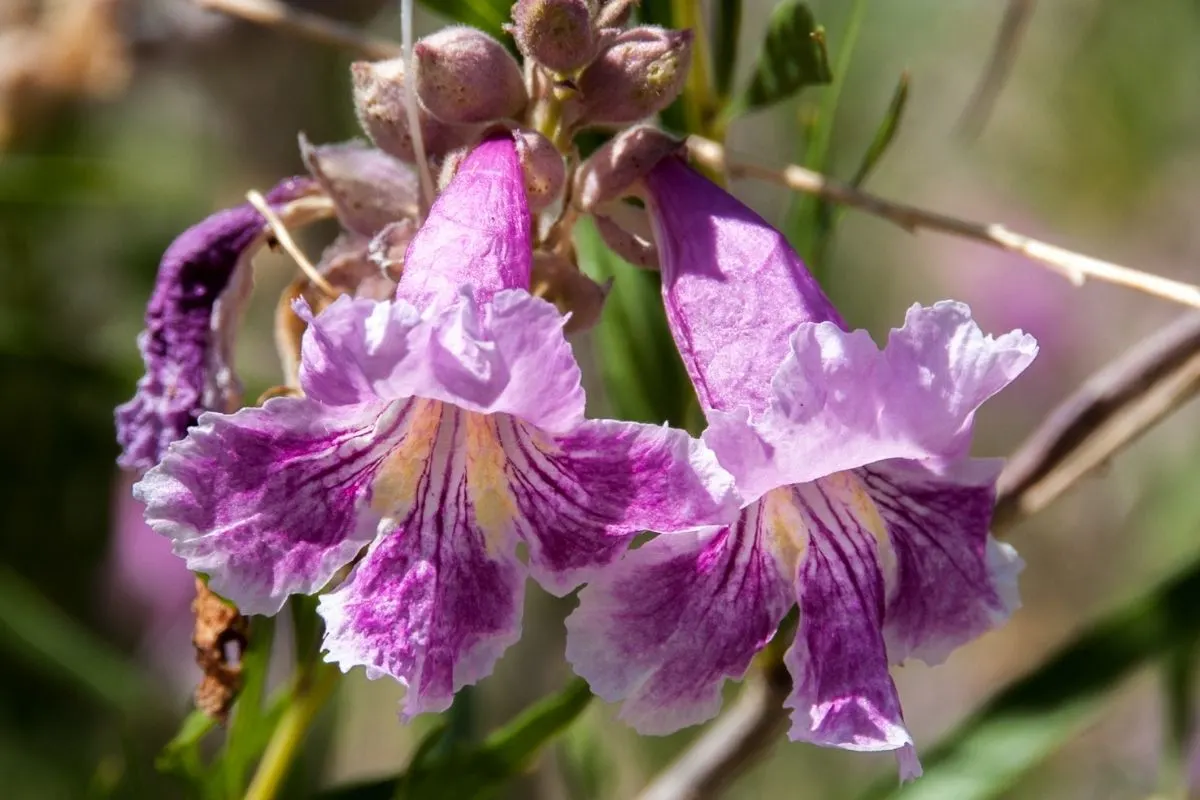
The desert willow isn’t really a willow. It is actually related to catalpa trees and trumpet vines. Favored for its ruffled, fragrant purple blooms, this desert tree from northern Mexico and West Texas does best with just enough water to keep it blooming.
After the flowers fall, long seed pods will add to the artistic interest of the tree.
Desert willows make a good privacy screen. They are also important hummingbird habitat. Grow in USDA Hardiness Zones 7 through 11.
4. Eastern redbud tree (Cercis canadensis)
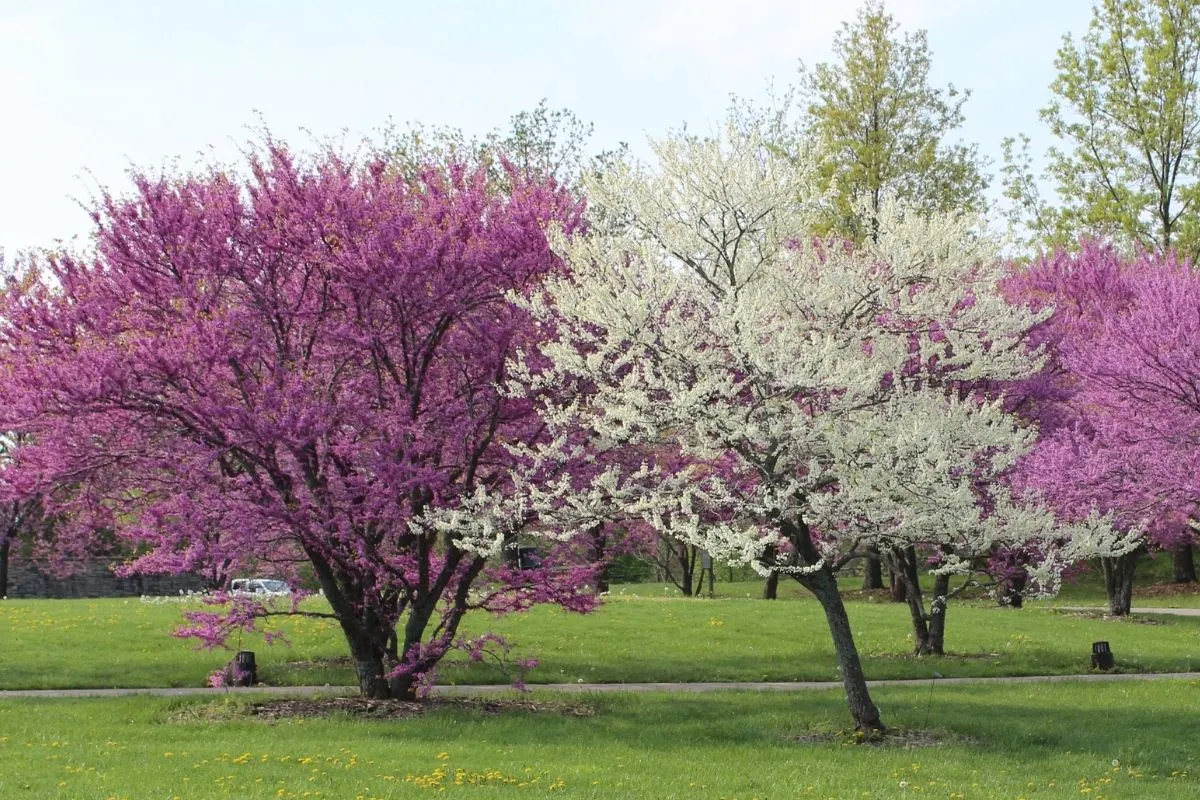
Eastern redbud (Cercis canadensis) bursts into purple (or sometimes white) blooms in early spring. Spring blooms are followed by purple pods of pea-like seeds that hang on the tree as it leafs out, providing color contrast to the tree and food for birds and squirrels.
The Forest Pansy variety also bears eye-catching orange-red leaves in the fall. Eastern redbuds are best used as an understory plant, but there are a variety of bloom colors that fit into every landscape design.
There are also Western redbuds, but the Eastern varieties put on more flowers and get fewer diseases than the redbuds native to northern California and the Pacific Northwest.
You can find dwarf varieties that are a good match for intimate rock gardens, but there are also varieties of Eastern redbuds that will grow 30 feet tall, even as an understory plant.
The most important consideration in planting a redbud is to place it under a deciduous tree. It should bloom before the tree above it leafs out, so it will have maximum energy for producing its seed pods.
Eastern redbuds do well in any well-drained soil, and are cold-tolerant in USDA Hardiness Zones 5 through 9,
5. Fragrant lilac (Syringa vulgaris)
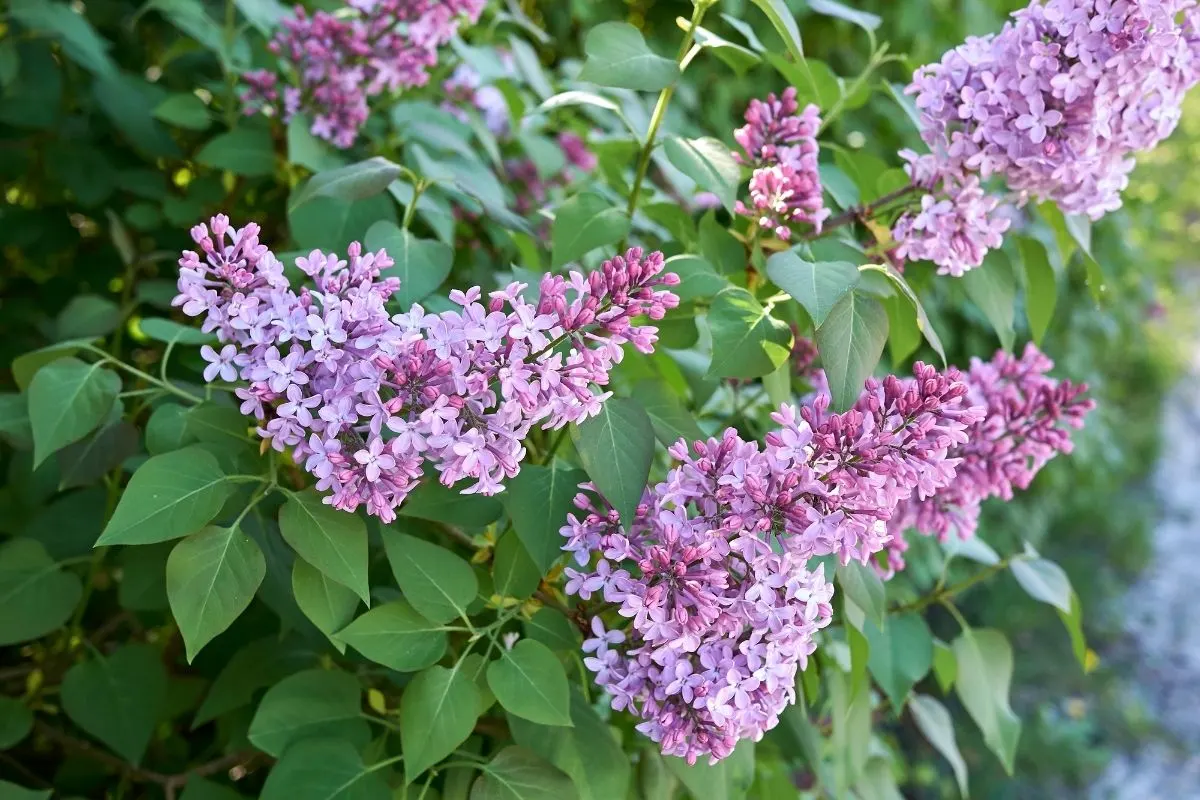
Fragrant lilac is a popular choice for gardeners who live in cool-summer climates. Sporting extremely fragrant, stunning purple flowers, lilacs put on long-lasting light purple flowers in late April or May. Their flowers attract the first butterflies of the spring, and their leaves provide food for early spring caterpillars.
Fragrant lilac can grow in any well-drained soil, whether alkaline or acidic. They cannot tolerate hot, humid summers, so they should be planted in USDA Hardiness Zones 4 through 7.
6. Jacaranda tree (Jacaranda mimosifolia)
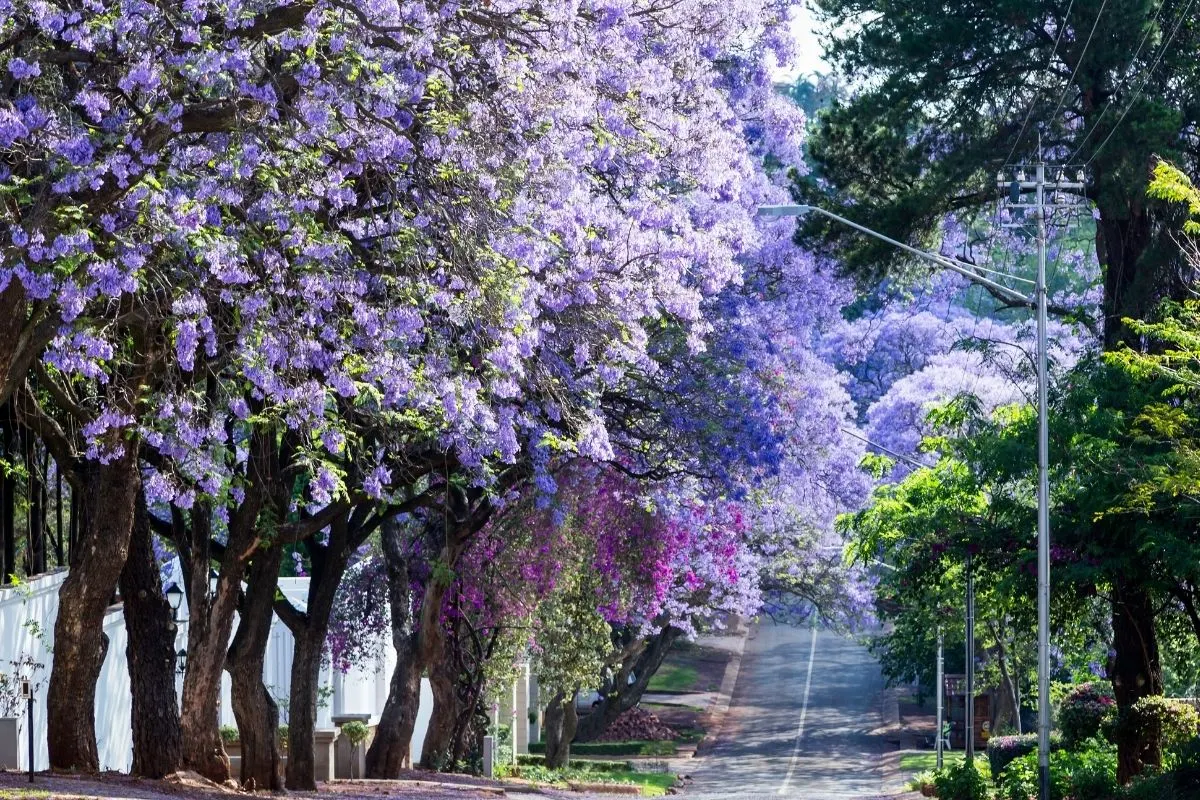
Anyone who spends late spring in Los Angeles will notice the blooming jacaranda trees. Their trumpet-shaped purple flowers are fragrant as well as beautiful for several weeks in late spring and early summer.
Jacarandas make great street trees and shade trees, but they are not suitable for small yards. A jacaranda tree can grow up to 66 feet tall.
In frost-free climates, it can bloom year-round, but even brief exposures to temperatures below 15 degrees Fahrenheit will kill it.
7. Purple lily magnolia (Magnolia liliiflora)
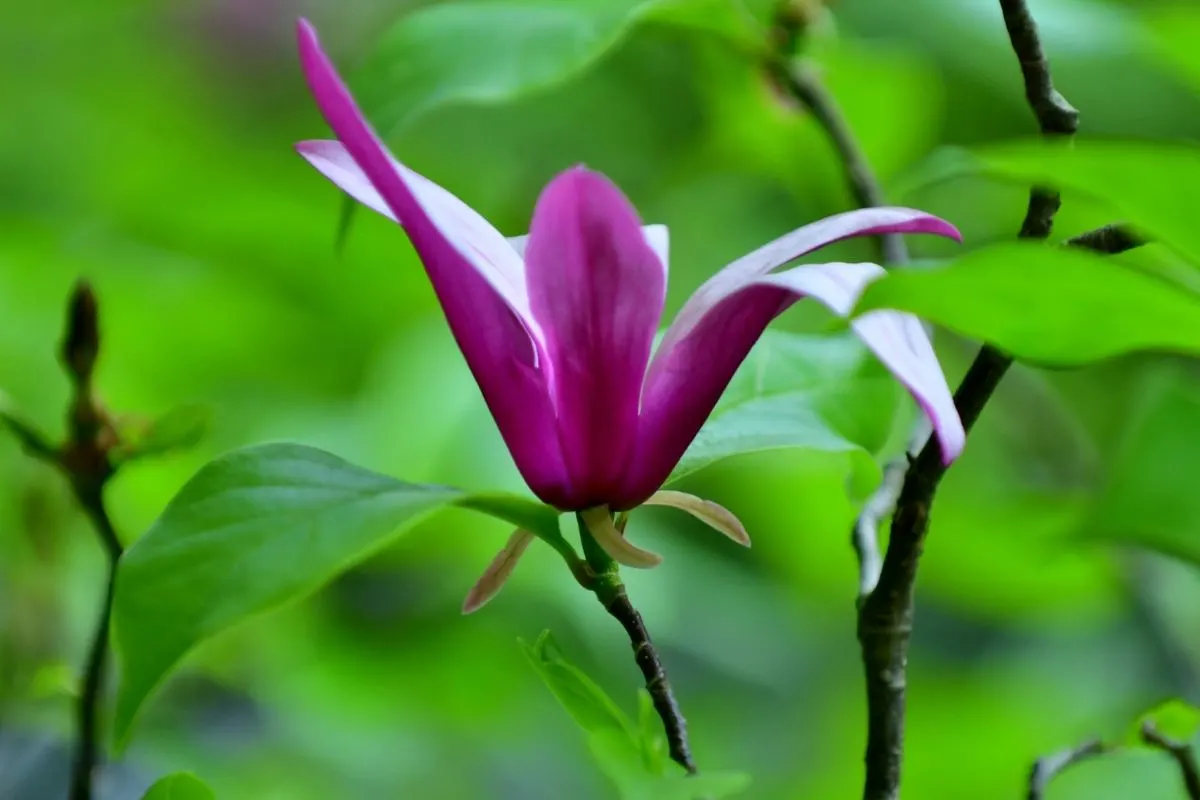
There are over eight species of magnolias that are native trees in the United States. Two of them are evergreen, and six drop their leaves every fall. North American magnolias are extremely adaptable, growing in gardens in climates and soils where they are never found in nature.
Magnolias can have flowers that are star-shaped, bowl-shaped, or saucer-shaped. The saucer-shaped or “saucer magnolias” (Magnolia x soulangeana) are the most popular magnolia for planting in the United States. They are a deciduous variety that looks good even during the winter when it has no leaves. They come in different strains that allow you to choose the kind of flower that you like.
Purple lily magnolias are native to China and Japan. They are covered with purple blooms every spring, with six or seven petals on every flower. The tree grows between eight and 12 feet tall, preferring a well-watered sandy loam.
There are varieties of purple lily magnolias for climates ranging from USDA growing zone 5 to USDA growing zone 10.
8. Purple orchid tree (Bauhinia purpurea)
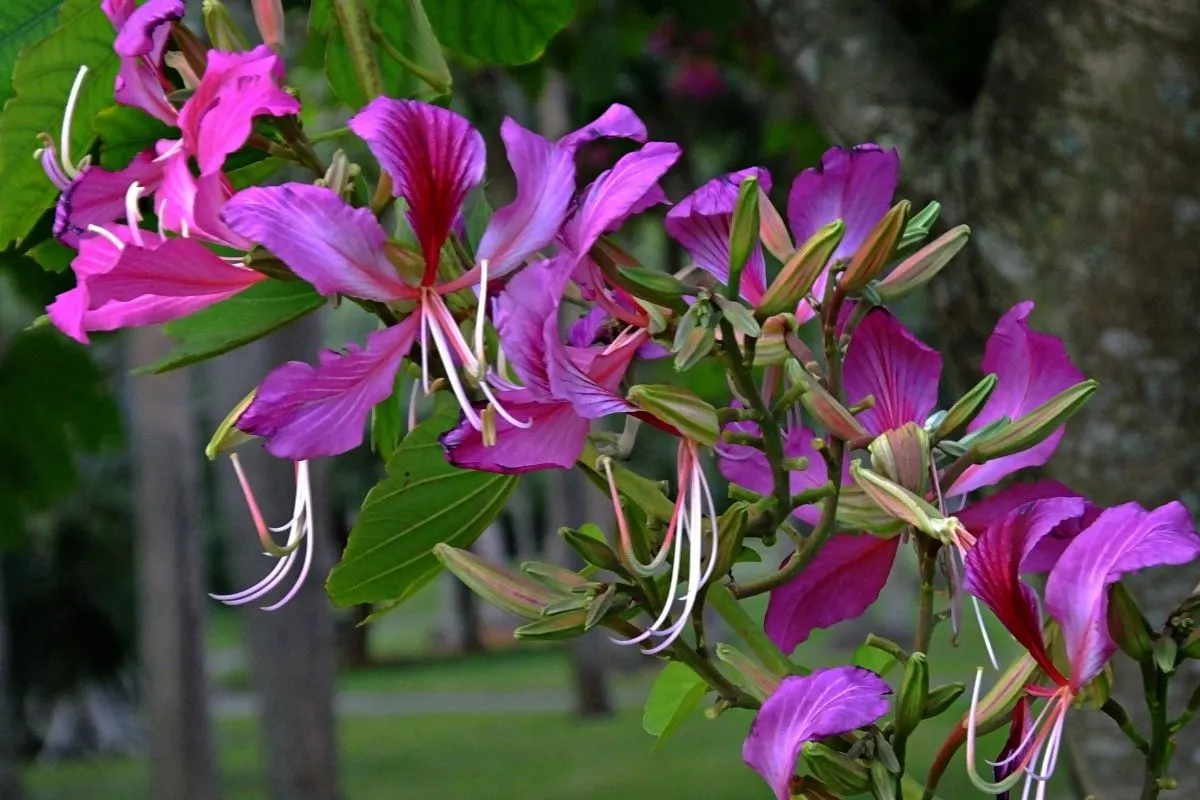
The purple orchid tree, sometimes referred to by its scientific name bauhinia, is a tropical evergreen imported from India. Growing in loamy or sandy soil and in light shade to full sun, this tree displays purple flowers from summer to winter.
Easily damaged by cold or frost, it is suitable for USDA hardiness zones 9B through 11. Adding compost or manure to their growing medium increases flowering, but they need good drainage.
In the right climates, purple orchid trees are a popular choice for landscaping highway medians and streets without sidewalks. They are also suitable for planting next to patios.
9. “Purple robe” locust (Robinia pseudoacacia Purple Robe)
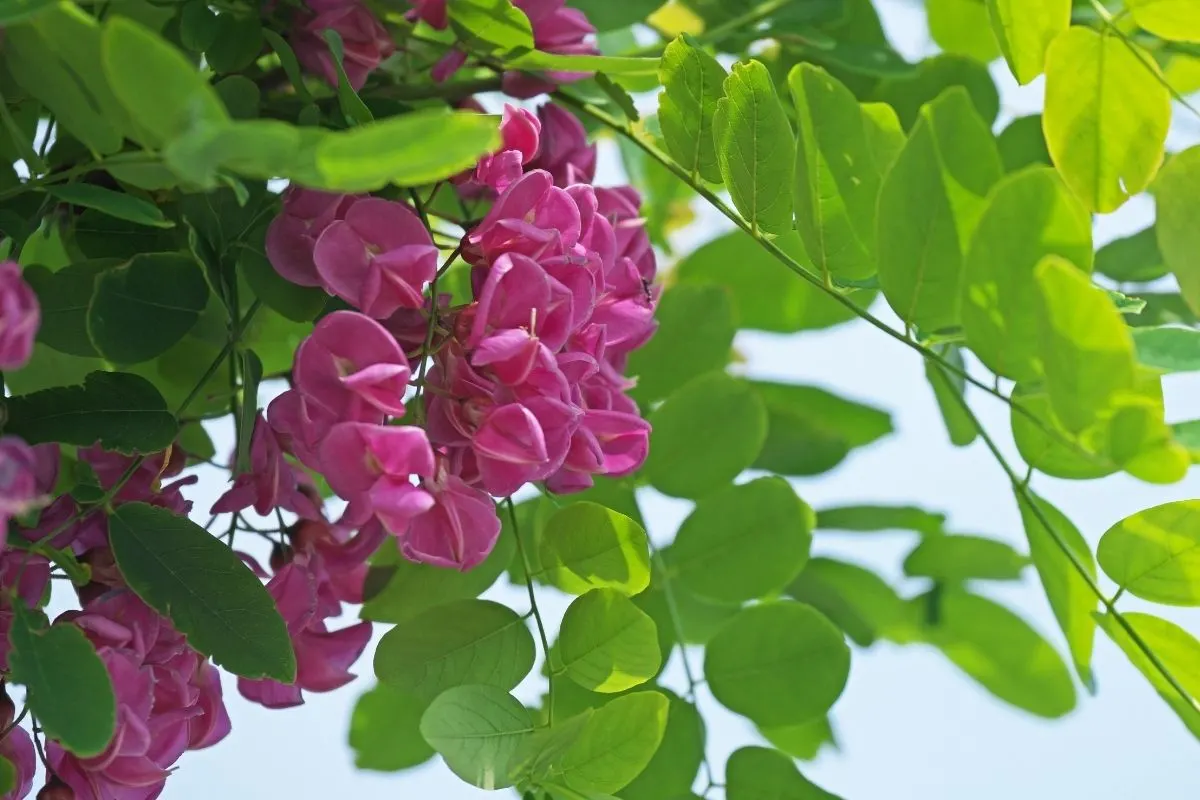
Locust trees are woody legumes that can take over abandoned lots and unattended lawns. As legumes, they can fix nitrogen and improve the soil. But as potentially invasive plants, they need regular attention to make sure they are not becoming more of a focal point than desired.
The purple flowers of the Purple Robe locust drape down like wisteria for several weeks in late spring, from late May to early June in most of the United States. They are extremely attractive to bees. Purple Robe locusts provide excellent shade.
This tree thrives in USDA growing zones 4 through 8, but cannot tolerate standing water. Be aware that it has sharp thorns that can become a hazard if it is placed in a park or a playground.
10. Texas mountain laurel (Dermatophyllum secundiflorum)
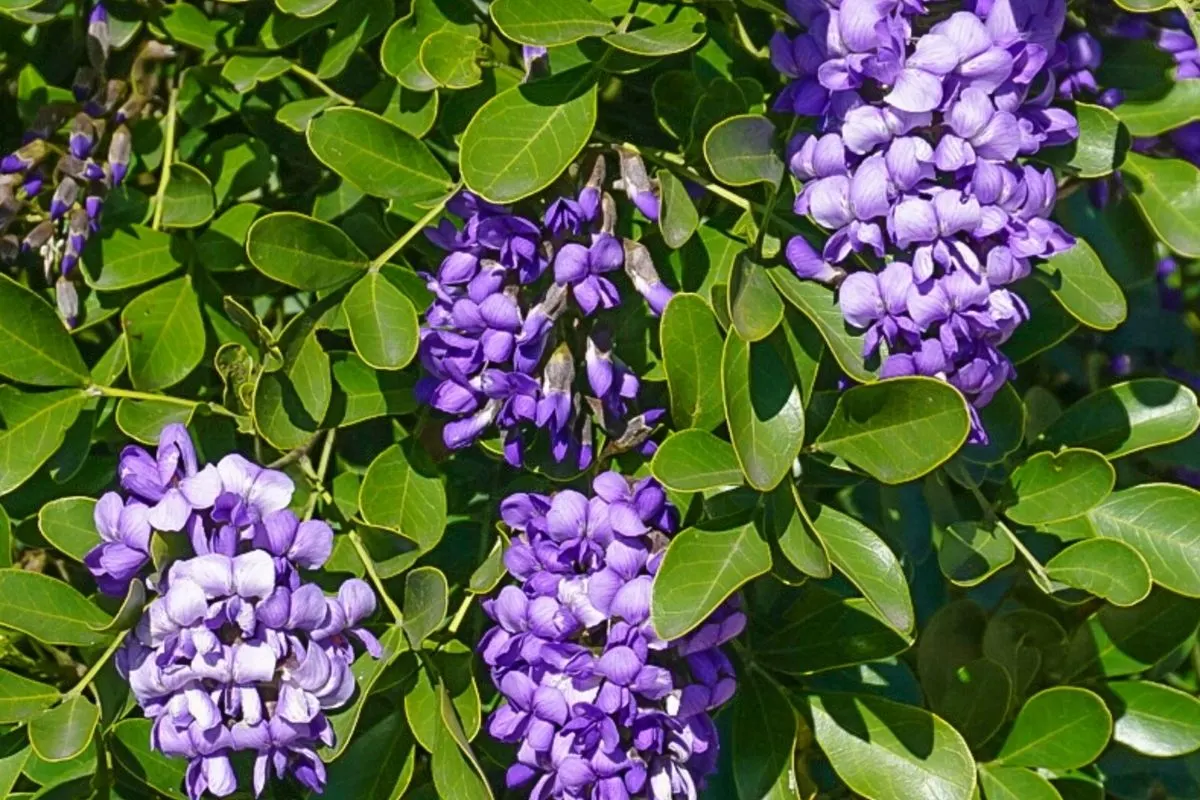
Texas mountain laurel is a favorite landscape plant for dry climates and rocky soils in Texas, Mexico, and even dry climates in South America. Bearing purple to blue flowers for several weeks around the time of the last frost.
Mountain laurels stand up to heat, cold, rocky and alkaline soils, and drought. They cannot, however, survive standing in water for more than a few hours.
Texas mountain laurel is sometimes called mescal bean, but the hard, round, red beans inside the plant’s pods do not actually contain any mescaline. They are, however, mildly hallucinogenic when consumed as a powder and likely to cause vomiting if they are eaten whole.
Texas mountain laurel survives winters in USDA Hardiness Zones 6 through 11. It bears bright green foliage all year round. It is very difficult to start Texas mountain laurels from seed, so it is best to buy a plant from a nursery.
Hopefully, you found one or more purple flowering trees you love. Plant one in your garden this spring! And… if you need even more ideas for purple showy flowers, try one of these:
- purple wisteria
- purple leaf plum
- paulownia tomentosa
Do you have a purple flowering tree you love that I didn’t mention? Please share its name (and a picture if you have one), and I’ll add it to our list.
More Colorful Trees You’ll Love
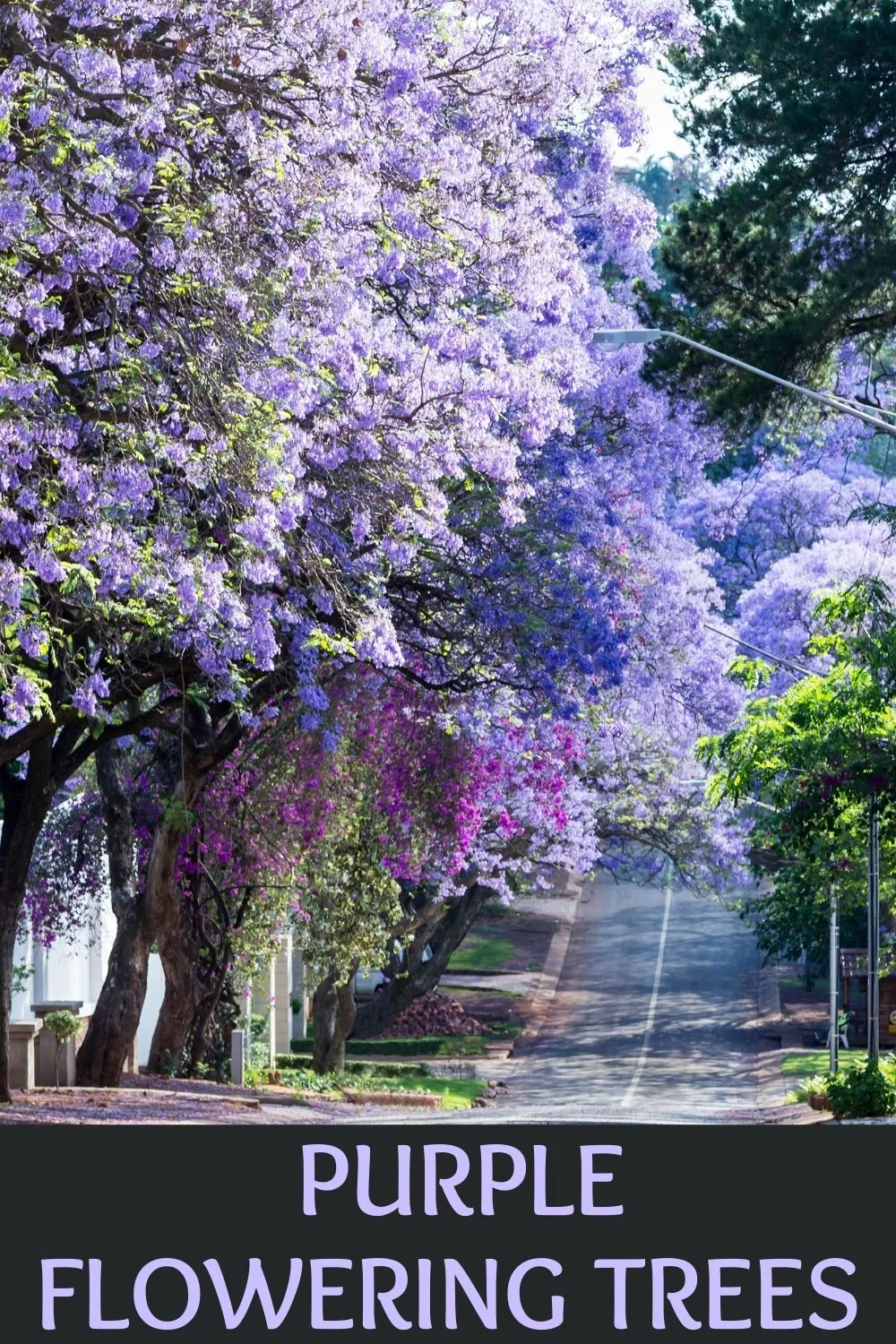

11 Pink Flowering Trees That Add Beauty To Your Landscape
Wednesday 8th of February 2023
[…] purple flowering trees […]
10 Types Of Flowering Trees For A Beautiful Yard
Wednesday 20th of April 2022
[…] no purple flowering tree is easier to grow than the Eastern redbud (Cercis candensis). Suitable for planting as a specimen […]